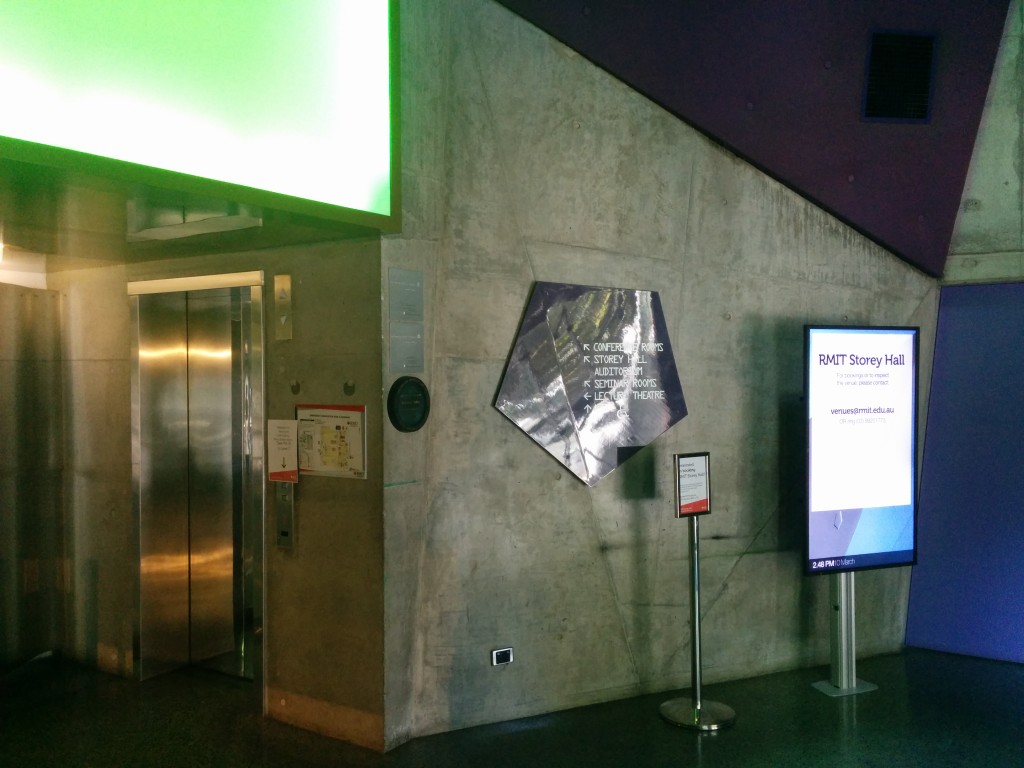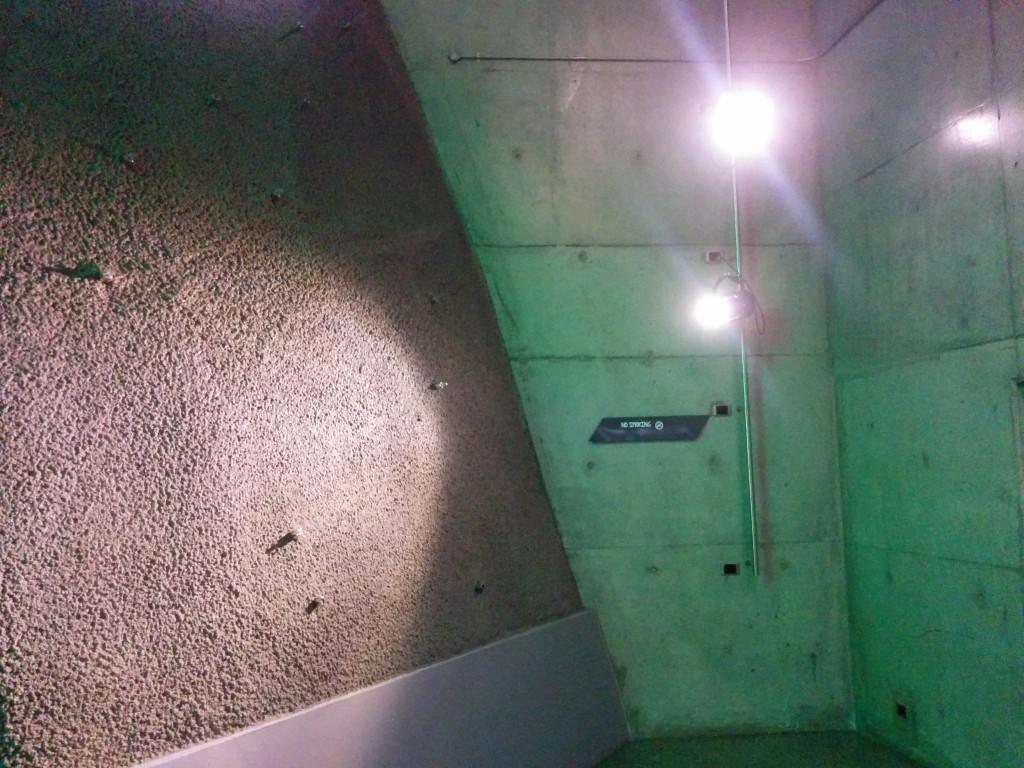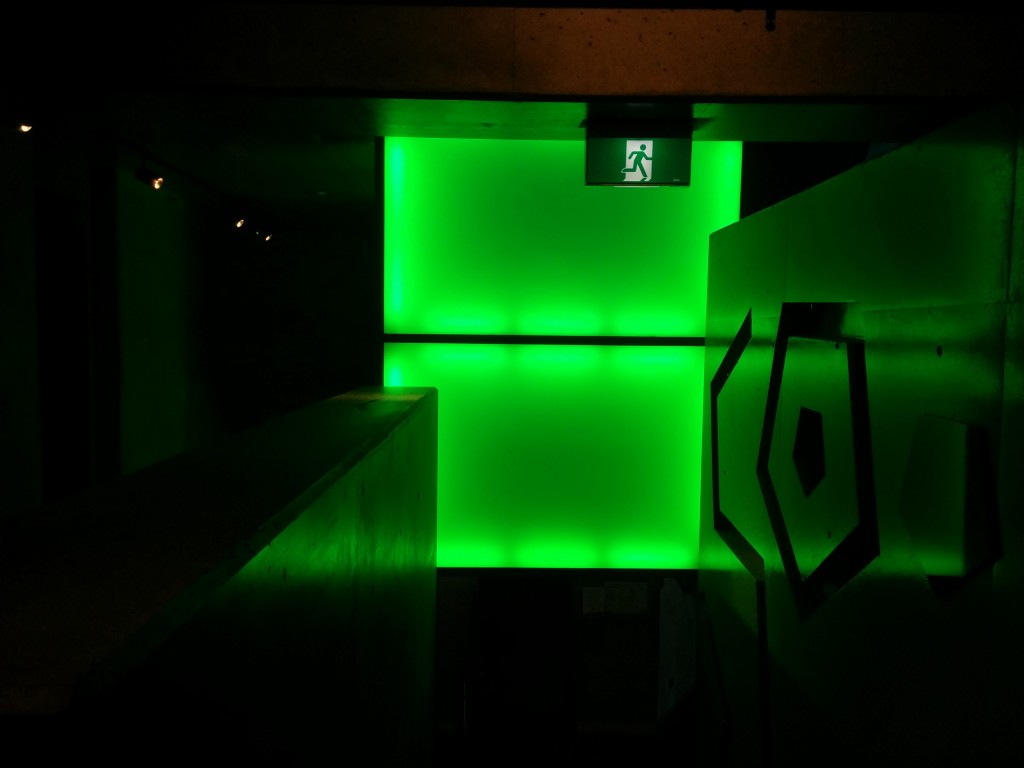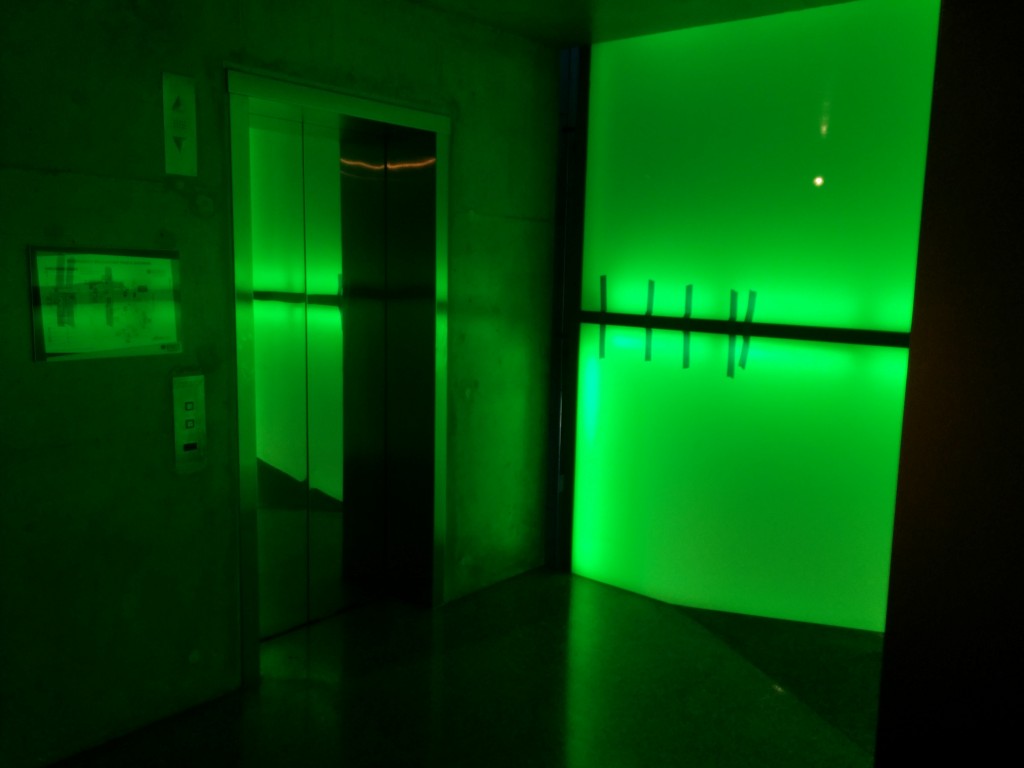I have chosen to investigate Storey Hall (building 16). Up until the first week of my final year at RMIT, I had never once entered the building. Upon first entering, I immediately felt unnerved, due both to the strange architectural structure and the overwhelming silence inside. However, at the same time the place felt somehow familiar. I’d like to explore this dichotomous feeling and better understand why I experienced it. As I continued to walk up the first flight of stairs, I felt as if I was trespassing. This could be attributed to the building’s emptiness, so I would like to re-visit it during a time when it is more populated.
One part of the site that felt ‘uncomfortable’ was an exposed brick wall on the second story landing (pictured below). As soon as I saw the wall, I felt as if it was out of place. Obviously on an aesthetic level, the exposed brick is conspicuous compared to the other brightly coloured walls and neon lights. But there was also something else about the wall that felt abnormal. It is as if this brick was a part of the original building that has been intentionally preserved despite the renovation. And, for whatever reason, there is something otherworldly about this wall, as if it connects the present Storey Hall with the former Hibernian Hall. It could almost be seen as a portal to another time, and I think I would like to treat the wall as if it were just that.
Here are some photos I took last time I visited:
The brick wall:
This wall is the most interesting part of the building for me, and has already inspired a number of ideas for the type of project I could create. I would like to investigate this part of the building, as I believe it to contain ‘hauntings of past inhabitations’ (Creswell 2004, p. 7).
After researching building 16, I discovered that the building was constructed in 1884-7 by the Hibernian Australasian Catholic Benefit Society. Formally known as Hibernian Hall, the building was officially opened on Wednesday 2 November 1887 by the Archbishop of Melbourne. The building was then occupied by the Central Zion Tabernacle from 1904 to 1907, from which it became known as Guild Hall. It was leased to a number of different people, eventually ending up with Mr. A Sculthorpe, who installed cinematographic equipment and played films in the building on Saturday nights. During the week, Guild Hall was available for hire and was home to a number of functions. Sculthorpe ended the lease in 1916 and it was transferred to the Women’s Political Association, a left-wing feminist organisation. In 1946, Melbourne Legacy took ownership of the building and its name changed to the D H Dureau Memorial Building. It remained in this ownership for ten years. Finally, RMIT bought the building from Bernard Evans, who had previously bought it from Melbourne Legacy. It was renamed Storey Hall in honour of John Storey, who was a businessman, an industrialist, and a benefactor and member of the College Council. His son, John Storey Jr., was also the first president of the SRC.
I returned to Storey Hall for the third time yesterday, and forgot how to find my way to the brick wall. I walked down the stairs into a lecture theatre before realising that I had to go up, not down. The first two times I visited I was able to easily find my way to the wall, as if I was being pulled towards it, however this time I was completely disorientated. When I did eventually find the wall, it looked even more out of place than usual. I also noticed that in the bottom left hand corner of this section of the building, the left wall turns in slightly, as if to suggest that it is some kind of corridor leading somewhere.
Why is this space left completely empty? Is the brick wall obstructing me from walking down the corridor? What is behind the wall? These are all question I will use as inspiration for creating my final project. I already have a number of ideas, all which lean towards creating a short film of some sort. The film will ideally take viewers through the wall and back in time, exploring the history of the building and some of the “ghosts” that have been left behind.
I also found some photos of the original building on the State Library of Victoria catalog:
 (http://handle.slv.vic.gov.au/10381/72562)
(http://handle.slv.vic.gov.au/10381/72562)
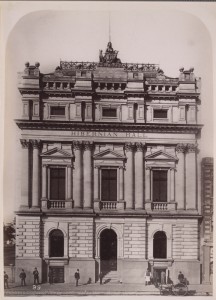 (http://handle.slv.vic.gov.au/10381/291046 )
(http://handle.slv.vic.gov.au/10381/291046 )
 (http://handle.slv.vic.gov.au/10381/103166)
(http://handle.slv.vic.gov.au/10381/103166)
References that refer to the building’s prior usage:
Beanland, DG et. al 1996, ‘Collection of articles on RMIT Storey Hall’, Transition, no. 51, pp. 3-40, viewed 11 March 2015, <http://search.informit.com.au/documentSummary;dn=980201685;res=IELAPA>
Smart, J 2008, ‘Respect not relief: feminism, guild socialism and the guild hall commune in Melbourne, 1917, Labour History, no. 94, pp. 113-132.
